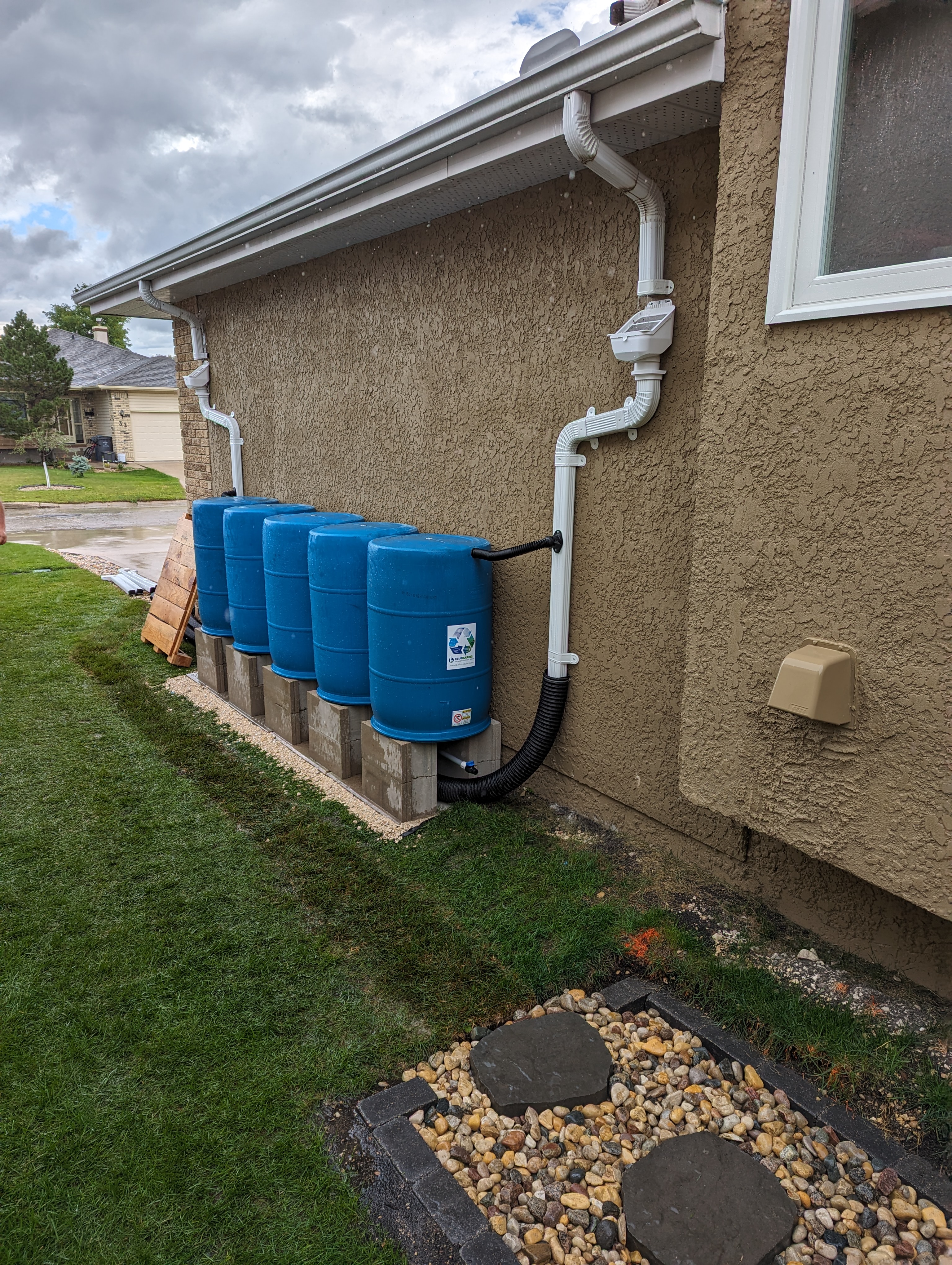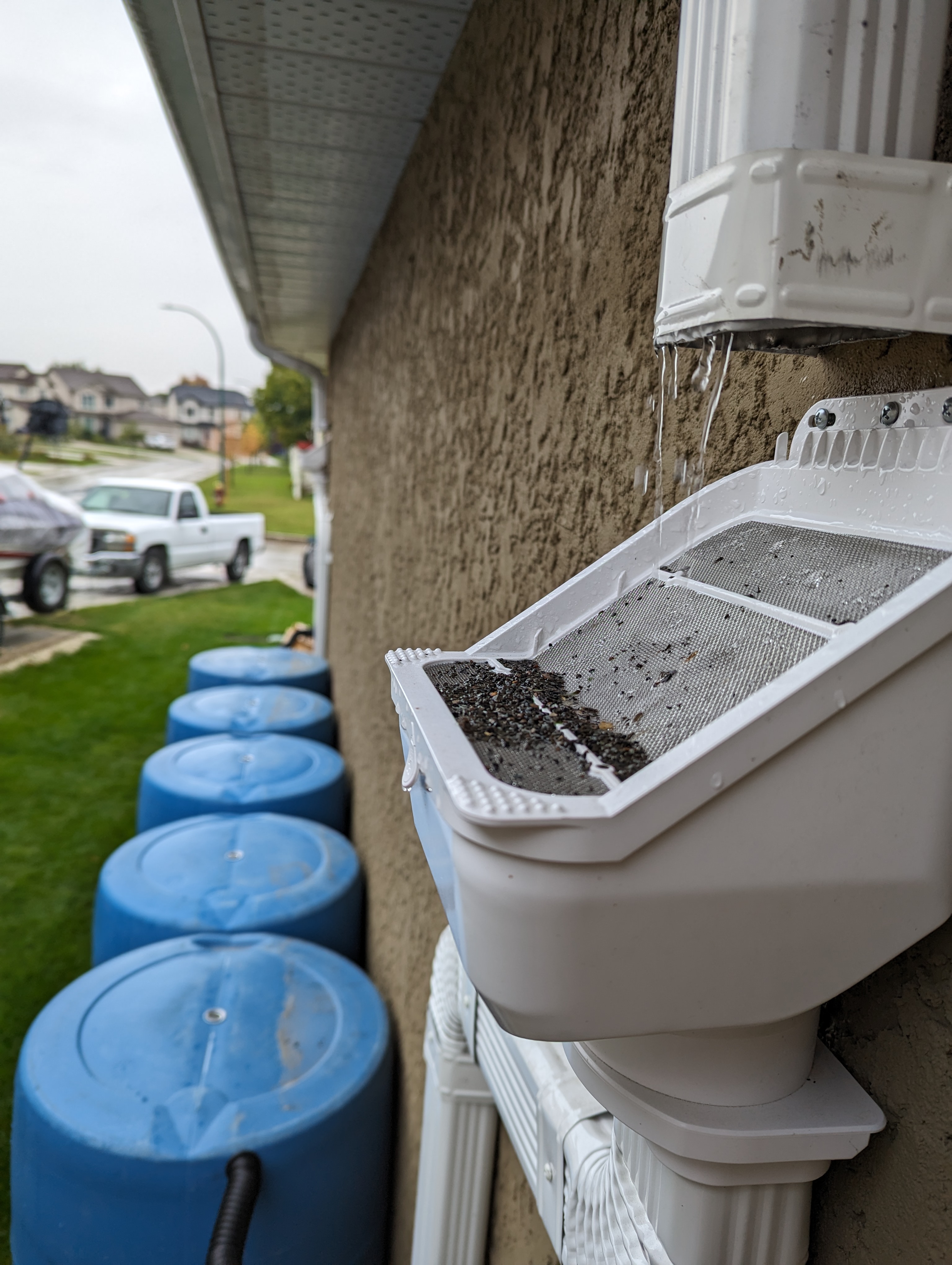Project: Rain Water Collection
Every drop collected is one less going into the sewer.
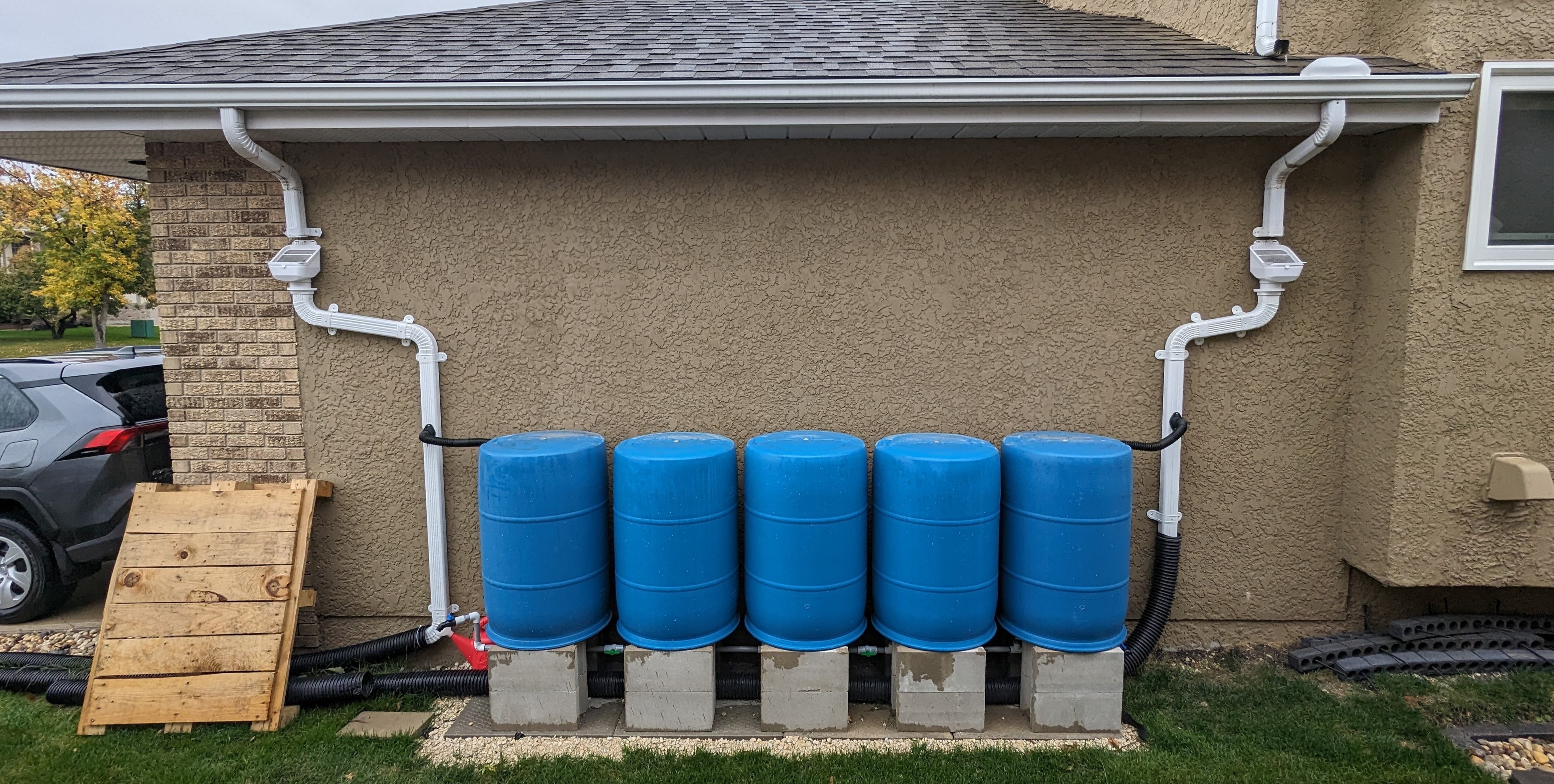
In 2023, my long-standing dream of harvesting rainwater finally materialized when I came across Blue Barrel, an innovative company offering DIY rainwater collection kits. Their design, which utilized upside-down 55-gallon barrels interconnected from beneath, captivated me. I decided to purchase their DIY kit, which included everything except for the PVC pipes and barrels, and use it to build a 5-barrel rainwater collection system. Five barrels would provide a total capacity of over 1000L, more than enough to supply my family and neighbors with rainwater throughout the summer.
Our endeavor centered on a rainwater collection system, harnessing water from two closely located downspouts on our home's western side. The project required several crucial steps, from establishing a robust foundation with limestone and patio stones to meticulous downspout adjustments. Furthermore, the separately purchased barrels, which previously held detergents, required thorough cleaning.
Cleaning the barrels proved challenging. The barrels had previously housed detergents, rendering them unsuitable for garden use without proper cleaning. Lacking comprehensive online guidance, we employed general principles. We initiated the process by rinsing them thoroughly. Taking advantage of our overchlorinated pool, we used the pool discharge to quickly fill the five barrels, allowing them to soak for 24 hours. This not only cleaned the barrels but also reduced the pool's chlorine levels when refilled.
Methodology
The project unfolded in three main phases: foundation establishment, downspout alteration, and system installation. Creating a solid foundation involved digging 6 inches below the finished grade, compacting limestone, and placing patio stones. Downspout modifications, including leaf eater installations, ensured effective rainwater diversion into the barrels. To connect the downspouts with the rain barrels, plumbing adjustments were necessary. Lastly, the rainwater collection system was installed, involving barrel cleaning, cinderblock placement on the foundation, PVC plumbing, and seamless integration with the downspouts.
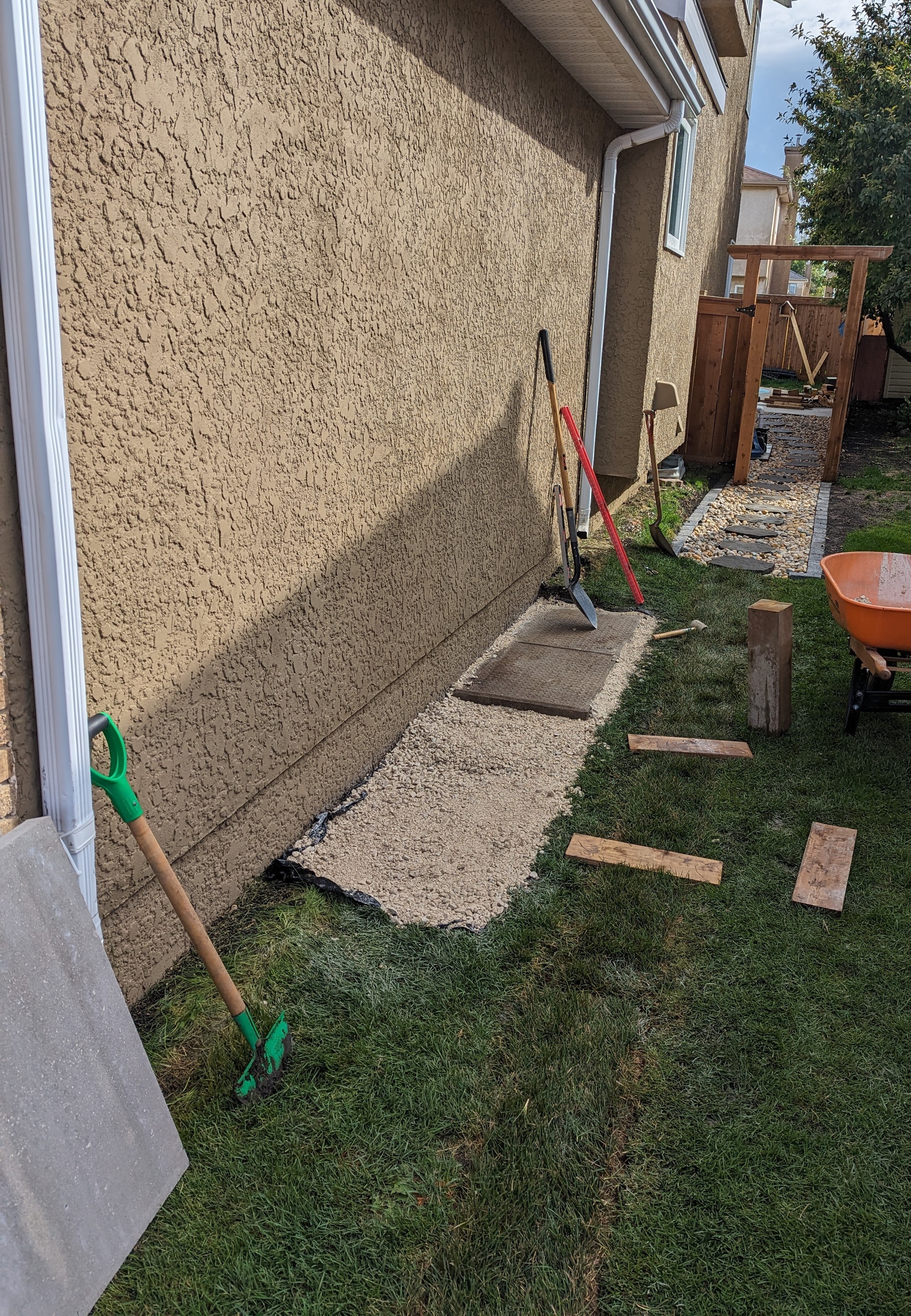
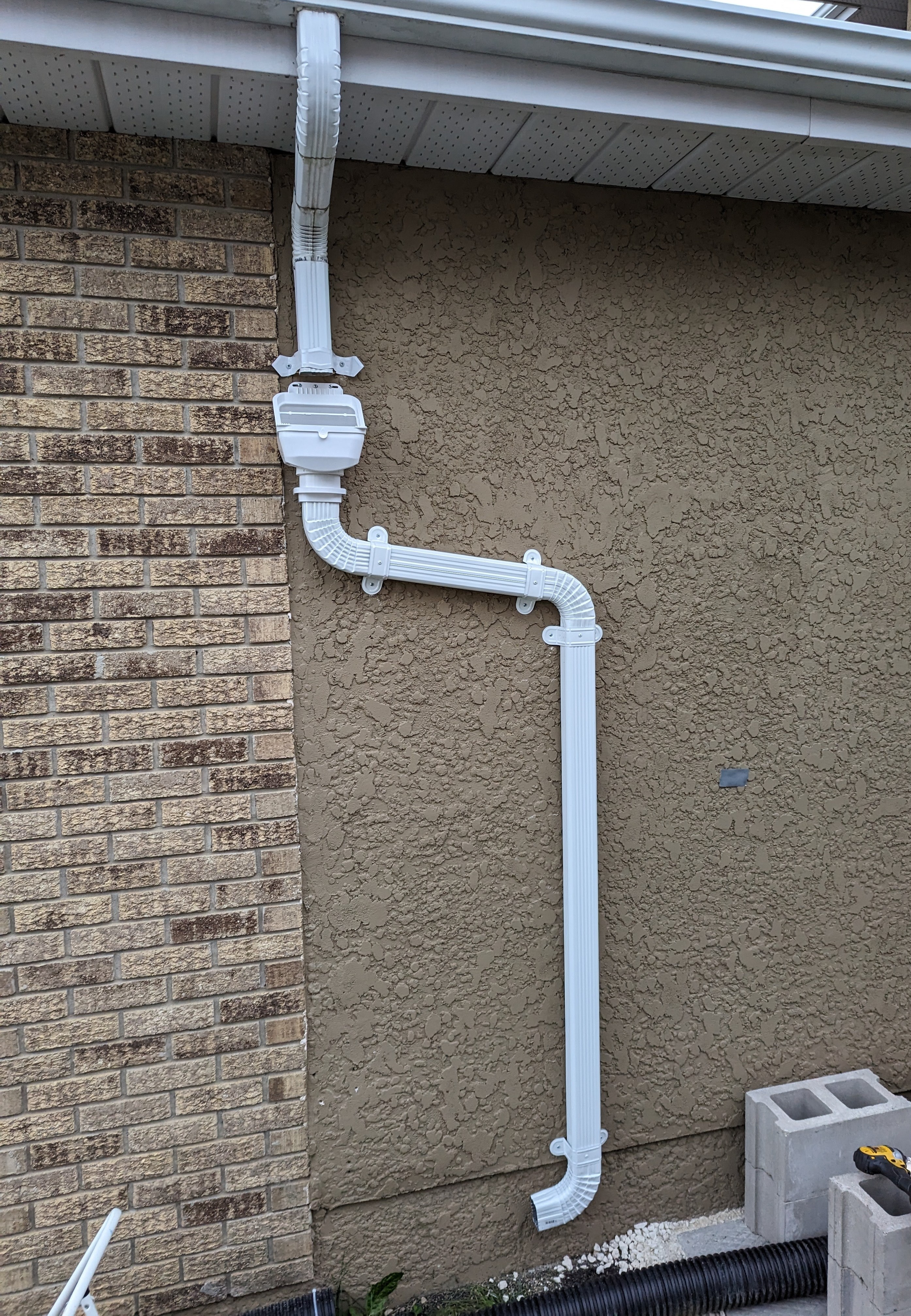
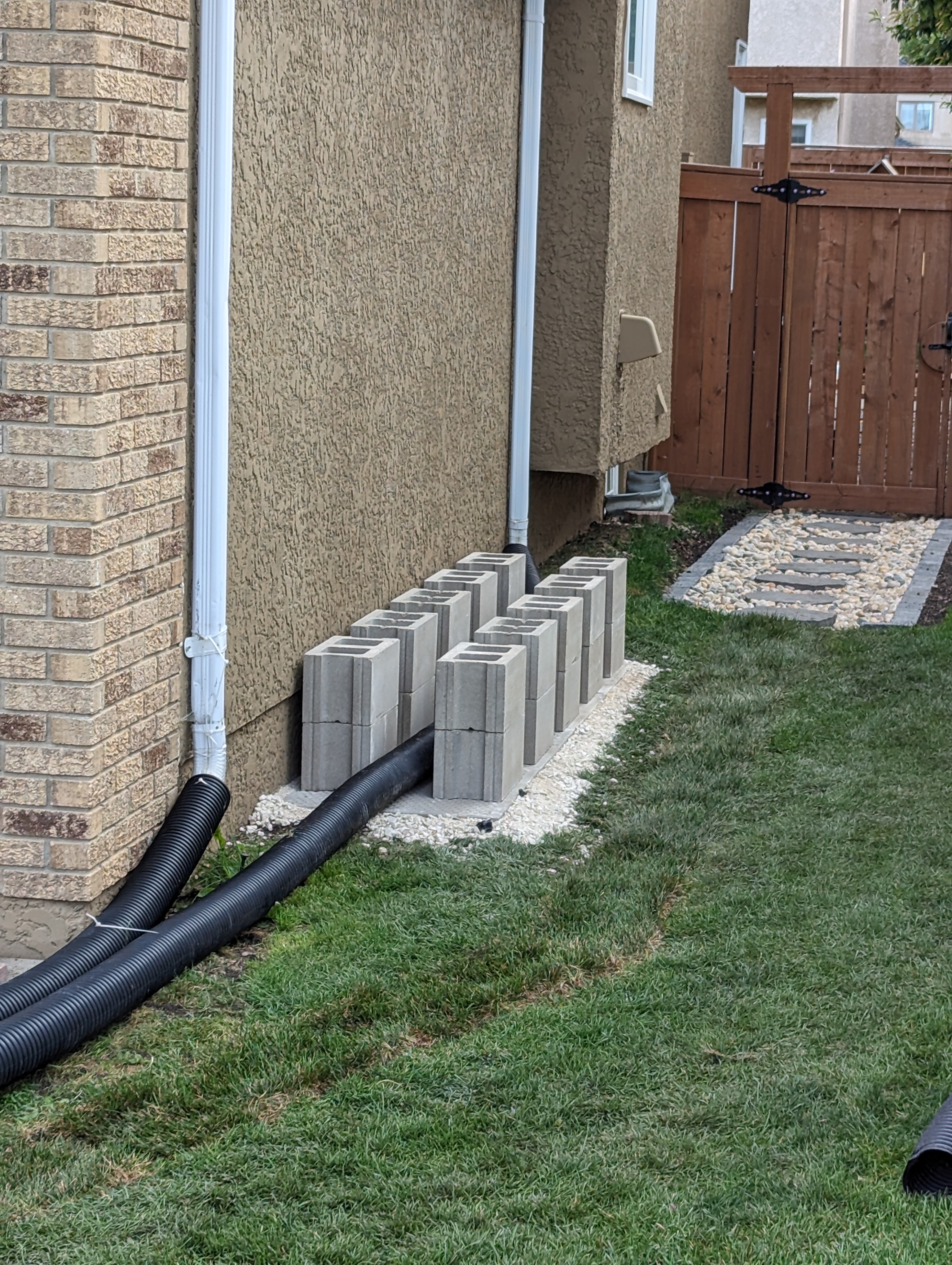

Takeaways
Our rainwater collection system exceeded expectations. It filled our 1000L tank in a single rainfall, making watering plants a breeze. My neighbors also benefitted, relishing the superior pressure compared to traditional rain barrels. In the future, I contemplate enhancing the system with drip irrigation for automated plant care. The invaluable knowledge gained from this project will prove instrumental when I construct my future home, where rainwater collection will be a prominent, sustainable feature and a symbol of community collaboration.
